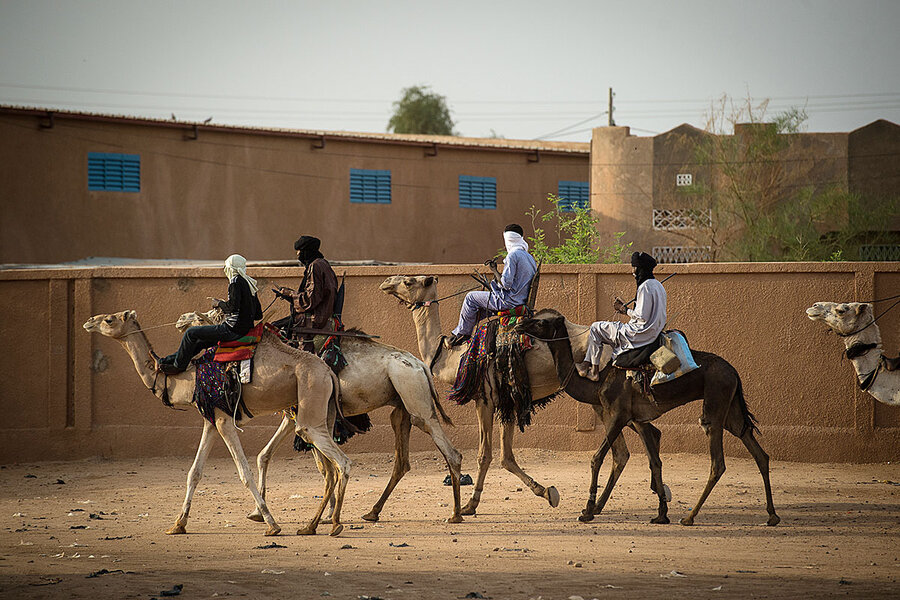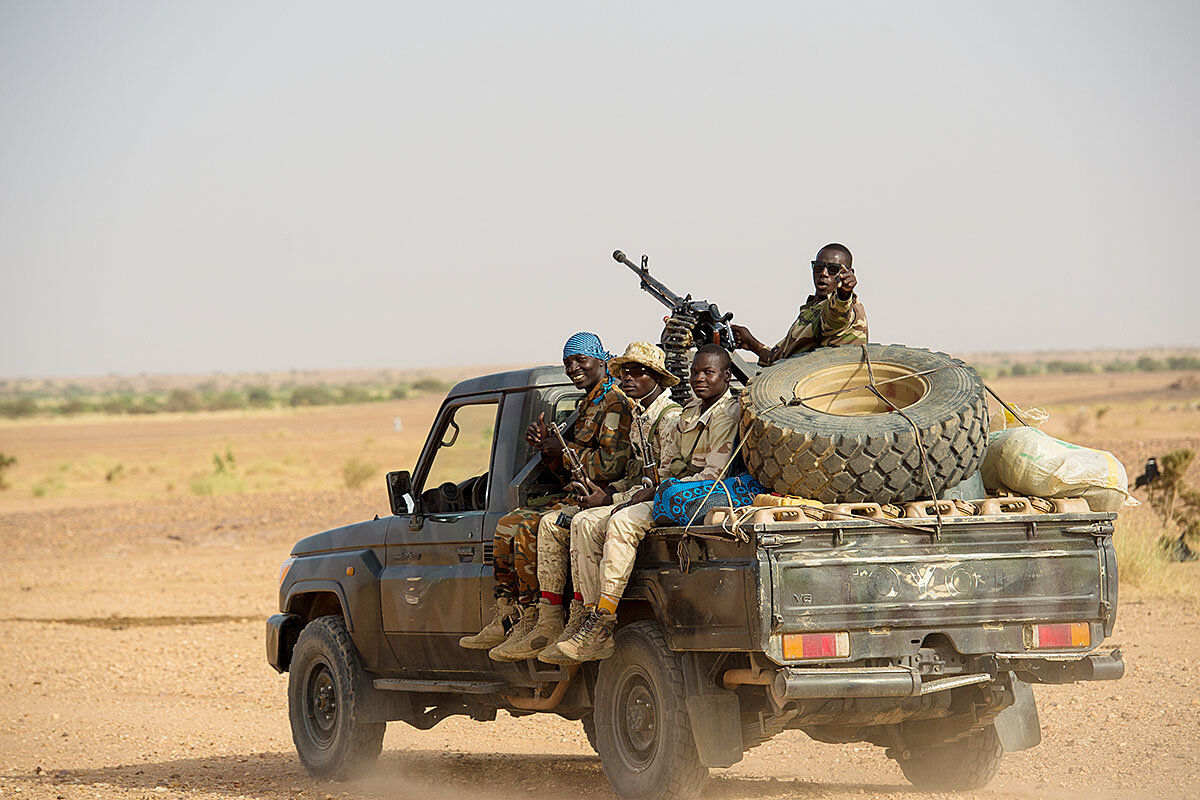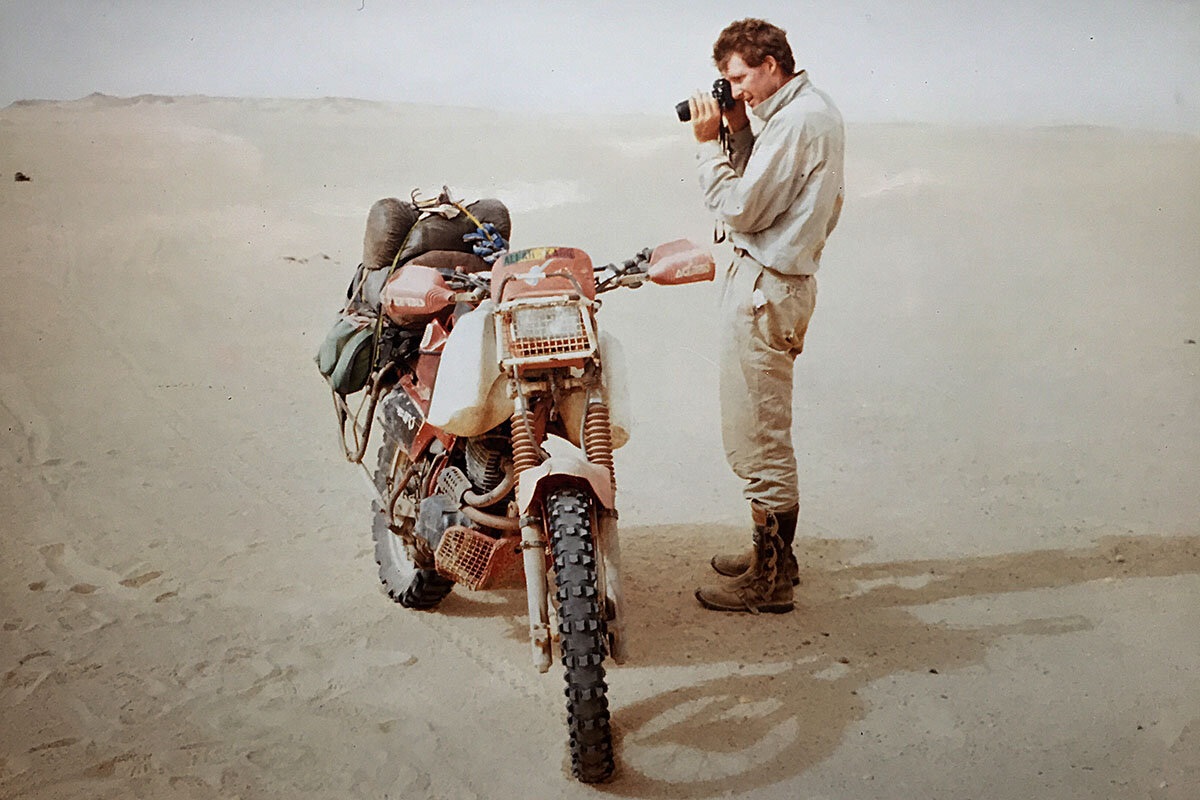In the Sahara, a vast emptiness etched with a thousand paths
Loading...
| Agadez, Niger
When two of the Monitor’s longest-serving foreign correspondents visited the Sahara recently, they approached the experience from very different perspectives. For Peter Ford, who had never been to this part of Africa, the trip was a journey of discovery; for Scott Peterson, who had motorcycled across the desert 30 years ago, it was a more nostalgic affair. That mix of memories and novelty added a new dimension to their work together. Scott and Peter were on a reporting trip to Agadez, Niger, a historic trading post that has been the southern gateway to the Sahara for centuries. They were investigating the town’s changing role as a transport hub for migrants heading north to Europe. In the Sahara, they found a desert that means many different things to different people: To its Tuareg inhabitants, accustomed to the trackless wastes, it means life and a livelihood. To many of the migrants, when things go wrong, it means death in the back of a broken-down pickup truck. To Scott and Peter, who share a taste for empty spaces a long way from established towns, it meant adventure. You’ll find more about their impressions in the full read.
Why We Wrote This
To two longtime Monitor correspondents on assignment, a step into the Sahara meant adventure. But to others, it can mean life and livelihood. To still others, it represents peril.
In Agadez, one simple, overriding reality imposes itself: the vast emptiness that surrounds this ancient trading post in the southern reaches of the Sahara desert.
Yet, as we found on a recent reporting trip together, that single reality means very different things to many different people. Not least to the two of us.
For Scott, the trip recalled his first youthful adventure in these parts, nearly 30 years ago, crossing the Sahara astride a Honda 500cc dirt bike. (More about that later.)
Why We Wrote This
To two longtime Monitor correspondents on assignment, a step into the Sahara meant adventure. But to others, it can mean life and livelihood. To still others, it represents peril.
But I had never been this far south in Africa and I was surprised – and a little disappointed – to find that the Sahara starts off as more a stony plain than a sea of sand. And my curiosity was tinged with caution. After all, the British government “advises against all travel” in the Agadez region for fear of jihadi terrorists, and the French authorities “strictly discourage” their citizens from frequenting the area.
That has wreaked havoc with one mainstay of the local economy – tourism. And the Niger government’s efforts to choke off the flow of migrants heading for Europe has toppled the other pillar of Agadez’s prosperity, the transport and guide business.
A crossroads, an oasis
For centuries Agadez has been a crossroads of the desert, an oasis where caravans of camels, guided by desert-dwelling Tuareg tribesmen, would stop to replenish as they carried gold, ivory, and ebony northward, or silks, beads, and pottery south.
For the Tuaregs, the desert means life. It is the place where they have always earned their living from their expertise and survival skills. Once they served camel trains that took 40 days to cross the desert. More recently they have driven the trucks and pickups that carried migrant workers to seek jobs in oil-rich Algeria and Libya in a couple of days.
Now the government has barred the route north out of Agadez, at the instigation of the European Union as it tries to stem the migrant tide. That hasn’t stopped everybody, though. And it means that the drivers who still try to smuggle migrants past the police patrols have to avoid all the traditional paths and drive through the trackless desert, trusting their luck and their GPS.
For many migrants – nobody knows how many – the desert has meant death. Pickup drivers lose their way and run out of fuel in the middle of nowhere, literally. Or their vehicles break down. The stranded passengers don’t stand a chance in the scorching desert heat.
“We saw dead people on the way,” recalled one Nigerian migrant we interviewed who had made the crossing. “You don’t feel comfortable. There’s a lot of desert and no road.”
(To read the series related to this trip, click here.)
The lure of the desert
Scott and I share a taste for empty spaces a long way from civilization (and, truth be told, for going to places our governments tell us not to go to.)
We were able to indulge ourselves, very briefly and accompanied by a truckload of heavily armed soldiers, on a four-hour foray northeast of Agadez along the road that leads eventually to Libya.
The whole of its length is marked only by six-foot-high concrete posts, sometimes planted a kilometer (six-tenths of a mile) apart. As I stared into the distance, awed by the endlessness, I could only imagine what lay beyond the last post that I could see. But I could almost hear Scott’s motorbike revving in his head.
This is what he was remembering as he surveyed the same vista:
Roaring north on my motorcycle in 1990, whipped by the desiccating winds sweeping across the southern edge of the Sahara, I knew the paved road would eventually end.
And it did, just outside Agadez, unceremoniously marking the spot where even Niger’s meager infrastructure ceased to exist. I eased the bike to a stop at the last lip of the pavement, and hopped off. Standing beside my overheated metal steed, I looked out over an endless expanse of sun-scorched earth and desert.
I was on a yearlong journey across Africa, launching my career in journalism by writing freelance stories along the way. The vast emptiness of the Sahara desert back then was to me the embodiment of adventure, of swashbuckling risk-taking, and pure freedom in one of the most inhospitable wildernesses on earth.
I was solely responsible for myself as I rode across that desert for three days and nights in the company of two Dutch bikers, headed northwest for Algeria. The motorcycle was a mess – a secondhand 500cc Honda dirt bike, with its muffler gone and red plastic sides melted from engine heat. But it boasted an oversized fuel tank fitted for long desert rides.
During the hottest hours of the day we created makeshift awnings, tying swaths of cloth to the handlebars of our bikes to make shade. At night I took long-exposure photographs of the stars and the Milky Way, with the bike in silhouette.
I was stepping deliberately into the unknown, riding that motorcycle off the pavement onto the dusty sand track with a youthful sense of bulletproof invincibility, undergirded by equal measures of exuberance and fear.
Decades later, back on that same road to report and photograph a story on African migration to Europe, I found that for both today’s migrants and my own self 30 years ago, the Sahara crossing marked an important step toward the future.
But where I had once discovered opportunity (I wrote my first story for The Christian Science Monitor from Niger back then) migrants were finding a potentially fatal barrier to their dreams. And even those who survive the journey risk being held for ransom by Libyan militia.
My desert had been the epitome of adventure and freedom. Too often, theirs promises nothing but suffering and enslavement.









